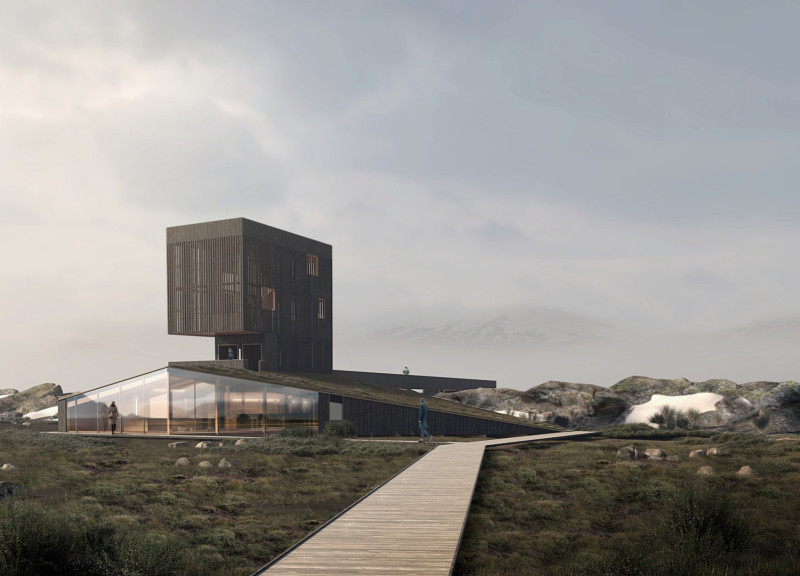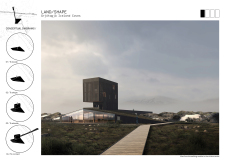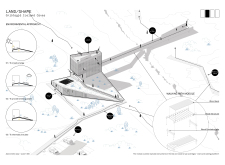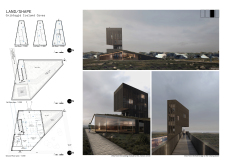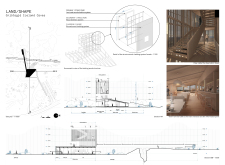5 key facts about this project
The architecture of this project features a unique multi-tiered structure that responds to the contours of the site with sensitivity and respect. At its core, the design emphasizes a connection with the land, utilizing local materials and sustainable practices that reflect an understanding of the environment. The primary form of the building is a tower-like element that stands above the landscape, offering panoramic views and creating a focal point that attracts visitors. This elevation provides an opportunity to appreciate the Icelandic landscape from new heights, thereby enriching the visitor experience.
At the ground level, the visitor center includes essential facilities such as a café and an information point. This space is designed to accommodate the needs of tourists, providing comfort and necessary information about the geological and cultural significance of the Grjótagjá caves. The building’s footprint is carefully arranged to blend into the topography, minimizing its visual impact while encouraging exploration of the natural surroundings.
Furthermore, the project introduces a series of elevated wooden walkways that connect various components of the site. These pathways are designed to facilitate movement while preserving the integrity of the natural habitat. The use of locally sourced laminated wood in both the primary and secondary structural systems reflects an appreciation for the environment and complements the aesthetic of the landscape. The cladding features a burned wood finish, which not only adds durability but also resonates with the natural textures found in the surrounding area.
Incorporating elements such as solar panels signifies a commitment to sustainability. The project employs thermal insulation techniques that optimize energy efficiency, ensuring that the space is comfortable for year-round use despite the harsh climate conditions. The design solutions are practical, allowing the building to function effectively while minimizing its carbon footprint.
This architectural endeavor is distinct in its approach to integrating the building with the surrounding landscape. The careful selection of materials and the consideration for environmental harmony allow the project to stand as an example of contemporary architecture that respects and enhances its setting. The use of common materials in an unconventional manner showcases innovative design ideas while remaining grounded in practicality.
Each component of the project is strategically designed to promote interaction with nature. The observation deck encourages visitors to reflect on their surroundings, while the service areas enhance the overall experience by providing necessary amenities. The project thus embodies a broader narrative about the relationship between architecture, landscape, and human engagement, prompting visitors to appreciate the delicate balance between nature and built environments.
For those interested in a deeper understanding of the design, exploring the architectural plans, sections, and elaborated ideas behind the project will provide valuable insights into its thoughtful conception and execution. Engaging with these elements will reveal the nuances of the design and affirm its role in enhancing the visitor experience at this remarkable natural site.


